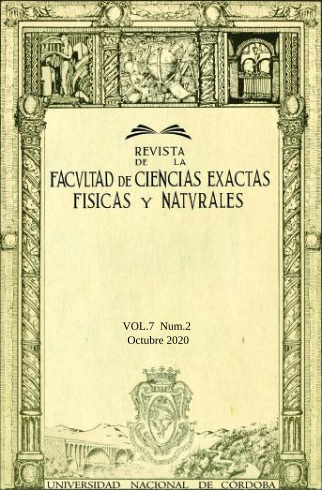Hermes II: Robot Educativo Holonómico para la Enseñanza en Ingeniería
Keywords:
robot omnidireccional, programación concurrente, educación universitariaAbstract
This paper details the design and construction process of a holonomic robot with four omnidirectional wheels for educational, low-cost, and scalable purposes. Aiming for each student to be able to build and program their own robot, this is seen as a cognitive tool that allows them to build and rebuild the perceived world through personal experience, achieving an incremental dynamic in the construction of knowledge.
As for the robot's control system, it is embedded in a development board that supports a free OS, which allows concurrent programming using threads in different programming languages, which supports developing component-oriented control software, facilitating the incorporation of future improvements on the software, actuator systems, and sensors controlled by it. The criteria of functionality, cost, simplicity, and duration were prioritized for the design and selection of components. As a result of this work, a robot was obtained with the peculiarities of being able to be built and programmed by the students, providing the facilities for its scalability and incorporation of new features of both software and hardware.
Downloads
References
[1] ACKERMANN, E. 2010. Piaget’s Constructivism, Papert’s Constructionism: What’s the difference? . MIT learning media communications.
[2] BATURONE, A. O. 2005. Robótica: manipuladores y robots móviles, Marcombo.
[3] BYBEE, R. W. 2010. What is STEM education? : American Association for the Advancement of Science.
[4] FERNANDES, S. L. 2018. Raspberry Pi 3 cookbook for Python programmers: unleash the potential of Raspberry Pi 3 with over 100 recipes, Packt Publishing Ltd.
[5] JOHN, J. C. 1989. Introduction to robotics: mechanics and control. Reading: Addison-Wesley.
[6] LICHTENSZTEIN, L. F., MICOLINI, O. & CEBOLLADA, M. “Hermes”: Sistema robótico embebido para la educación. Biennial Congress of Argentina (ARGENCON), 2014 IEEE, 2014. IEEE, 310-315.
[7] MONDADA, F., BONANI, M., RAEMY, X., PUGH, J., CIANCI, C., KLAPTOCZ, A., MAGNENAT, S., ZUFFEREY, J.-C., FLOREANO, D. & MARTINOLI, A. The e-puck, a robot designed for education in engineering. Proceedings of the 9th conference on autonomous robot systems and competitions, 2009. IPCB: Instituto Politécnico de Castelo Branco, 59-65.
[8] MUBIN, O., STEVENS, C. J., SHAHID, S., AL MAHMUD, A. & DONG, J.-J. 2013. A review of the applicability of robots in education. Journal of Technology in Education and Learning, 1, 13.
[9] SANDERS, M. E. 2008. Stem, stem education, stemmania.
[10] SIEWERT, S. 2016. Real time embedded components and systems, Cengage Learning.
[11] SOMMERVILLE, I. 2016. Software Engineering. International computer science series, Tenth Edition. ed: Addison Wesley.
[12] SONG, H., RAWAT, D. B., JESCHKE, S. & BRECHER, C. 2016. Cyber-physical systems: foundations, principles and applications, Morgan Kaufmann.
[13] TRAIN'S., T. A. 1996. A study guide to dc motor controls. Solid state motor controls training series.
Downloads
Published
Issue
Section
License
Copyright (c) 2020 Facultad de Ciencias Exactas, Físicas y Naturales (Universidad Nacional de Córdoba)

This work is licensed under a Creative Commons Attribution 4.0 International License.
Los autores que publican en esta revista están de acuerdo con los siguientes términos:
Los autores conservan los derechos de autor y conceden a la revista el derecho de la primera publicación.
Los autores pueden establecer por separado acuerdos adicionales para la distribución no exclusiva de la versión de la obra publicada en la revista (por ejemplo, situarlo en un repositorio institucional o publicarlo en un libro), con un reconocimiento de su publicación inicial en esta revista.
Se permite y se anima a los autores a difundir sus trabajos electrónicamente (por ejemplo, en repositorios institucionales o en su propio sitio web) antes y durante el proceso de envío, ya que puede dar lugar a intercambios productivos, así como a una citación más temprana y mayor de los trabajos publicados (Véase The Effect of Open Access) (en inglés).



